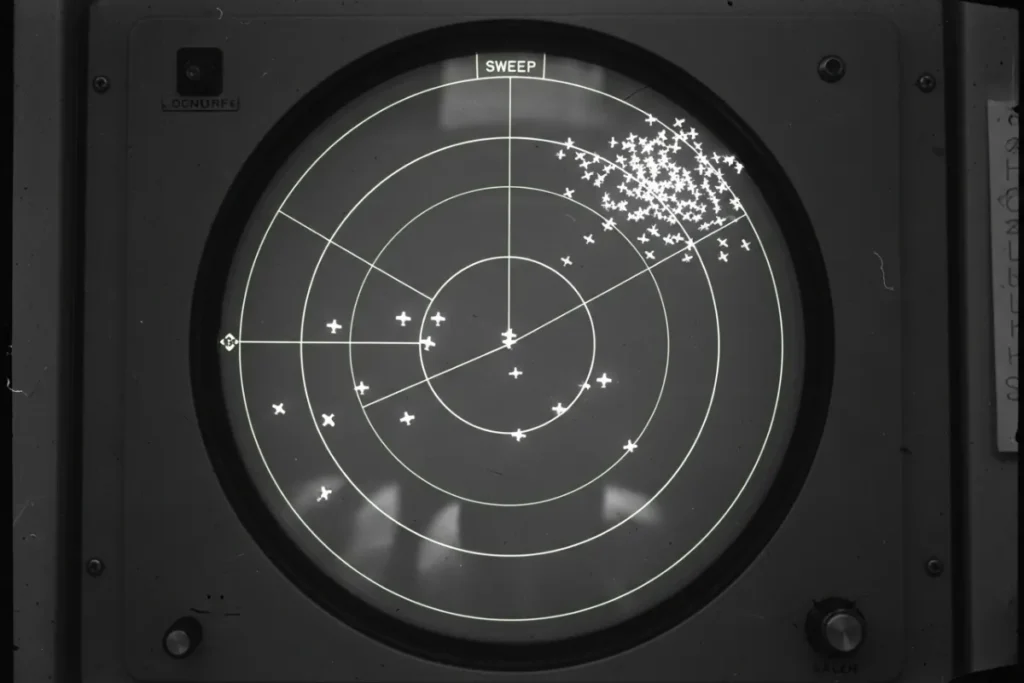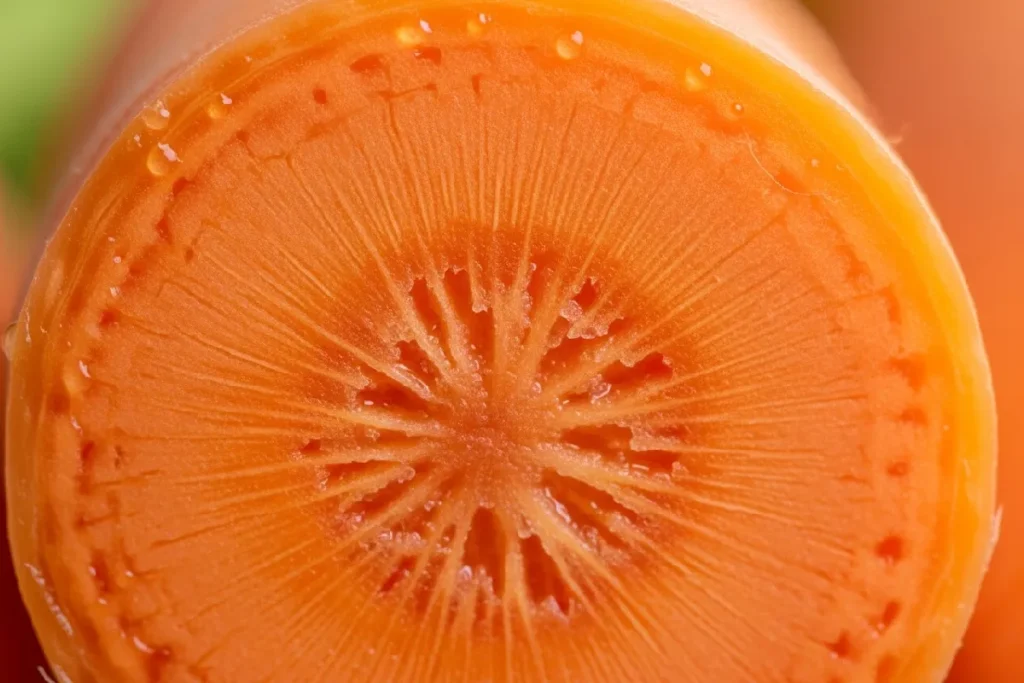This article exposes the shocking history of the carrots’ eyesight myth, revealing how it was a masterfully crafted piece of British WWII propaganda.
Table of Contents
Introduction
The Carrots Eyesight Myth is one of the most enduring health tales ever told. It’s a piece of wisdom passed down from parents to children with such confidence that to question it feels absurd. Eat your carrots, and you’ll see in the dark. Simple, right? But this universally accepted “fact” isn’t a harmless nutritional tip. It is the surviving remnant of one of the most brilliant and devious propaganda campaigns of the 20th century, a masterfully crafted lie designed to fool the entire world and protect a war-winning secret. The story you’ve been told your whole life is a complete fabrication, born in the darkest hours of World War II.
To grasp the sheer audacity of this deception, we must return to the nightly terror of the Blitz. German bombers flew over Britain under the cover of darkness, seemingly untouchable. Then, almost overnight, Royal Air Force pilots began hunting them with uncanny success. The public celebrated, but enemy intelligence was scrambling for an answer. How did these pilots suddenly gain the vision of a cat? The British government needed a cover story, and fast. The answer they devised was not just clever; it was a psychological masterstroke that would echo for nearly a century: the Carrots Eyesight Myth.
This article will dismantle that myth piece by piece. We will journey back to its inception amid the chaos of war and expose the sophisticated propaganda machine that brought it to life. We will then reveal the incredible technology—radar—that the myth was designed to hide. From there, we’ll explore how a temporary wartime ruse transformed into permanent kitchen-table wisdom, and finally, we will deliver the definitive scientific verdict, separating the small kernel of truth from the mountain of fiction. Get ready to rethink everything you thought you knew about carrots, eyesight, and the power of a well-told lie.
The Blitz and the Birth of a Necessary Deception
To understand the origin of the Carrots Eyesight Myth, you must first picture the terrifying darkness of 1940s Britain. As air-raid sirens wailed across London during the Blitz, the German Luftwaffe reigned supreme in the night sky. British cities burned under a relentless bombing campaign, and the Royal Air Force (RAF) was, at first, frighteningly ill-equipped to fight back. Pilots struggled to locate and intercept enemy bombers in the pitch-black, leading to immense public pressure and military desperation. A solution was needed, not just to win the air war, but to manage public perception. This desperate need for an answer created the fertile ground from which the Carrot Eyesight Myth would eventually sprout.
Suddenly, the tide began to turn. RAF night-fighter pilots started achieving impossible success, downing enemy aircraft with stunning accuracy. These victories were a monumental boost to British morale, but they also created a dangerous new problem: how was this happening? The public was curious, but more importantly, German intelligence was baffled and suspicious. Attributing the wins to simple pilot skill was not a sustainable explanation. British military command knew they couldn’t celebrate these victories without providing a cover story, one that would divert enemy attention from the real reason for their newfound dominance. This strategic dilemma necessitated the conception of the Carrot Eyesight Myth.
Faced with this challenge, the British Ministry of Information was tasked with creating a masterful piece of misdirection. They needed a lie that was simple, believable, and, most critically, non-technical. The solution they landed on was pure genius: a nutritional explanation. This approach led directly to the development of the enduring Carrots Eyesight Myth. By publicly claiming their top pilots were consuming a diet rich in carrots to gain superior night vision, the government crafted the perfect red herring. The narrative was simple to spread and difficult to disprove, successfully hiding the truth of Britain’s advanced radar technology behind the facade of the flawed Carrots Eyesight Myth.

Operation Carrot: Inside the Propaganda Machine That Built the Myth
With the lie conceived, the British government launched a full-scale assault on public consciousness. This was a masterclass in information warfare, where the mechanics of the Carrot’s Eyesight Myth were executed with precision. Government-sponsored advertisements flooded newspapers and magazines, featuring taglines that explicitly linked carrots to superior vision. Posters depicted families happily eating carrots, while radio broadcasts shared “official” advice on how the root vegetable could help citizens see better during blackouts. The campaign was relentless and ubiquitous, embedding the flawed Carrots Eyesight Myth into the very fabric of daily life and ensuring the population would spread the story for them.
To give their propaganda a human face, the Ministry of Information turned to a real-life hero: John “Cat’s Eyes” Cunningham, the RAF’s most successful night-fighter ace. The press was fed a compelling, albeit entirely fabricated, story that Cunningham’s incredible tally of 20 nighttime victories was due to a heavy diet of carrots. This narrative gave the Carrots Eyesight Myth a charismatic and credible champion. He became the living embodiment of the lie, a walking, talking piece of propaganda whose success seemed to offer undeniable proof. By linking a national hero to this tale, the government made rethinking the Carrots’ Eyesight Myth seem almost unpatriotic.
The true genius of this campaign, however, lay in its dual purpose. While the primary objective was to deceive German intelligence, the consequences of the Carrots Eyesight Myth had a profound impact on the home front. Food was strictly rationed, but carrots were one of the few vegetables in plentiful supply. The propaganda not only provided a cover for Britain’s radar secret but also encouraged the public to embrace a readily available food source, boosting national nutrition and morale. This brilliant secondary effect ensured the Carrots Eyesight Myth would outlive its original military purpose, transforming a wartime lie into a lasting piece of kitchen-table wisdom.
The Real Secret: How Radar, Not Carrots, Dominated the Night Skies
While the public was being sold stories of super-sighted, carrot-crunching pilots, the real hero of the night skies was a box of wires and vacuum tubes. The true reason for the RAF’s sudden dominance was a top-secret technology known as Airborne Interception (AI) radar. These revolutionary units, small enough to be fitted into the noses of night-fighter aircraft, sent out radio waves that bounced off enemy bombers. The returning signals painted a picture on a cathode-ray screen in the cockpit, allowing pilots to “see” targets from miles away in complete darkness. This technological miracle, not a vegetable, was Britain’s real secret weapon.
This stark reality exposes the Carrots Eyesight Myth for what it was: a complete and masterfully executed fabrication. There was no connection between diet and the RAF’s success. The victories were won not by vitamins, but by wavelengths. The lie was designed purely for strategic deception, creating a narrative so mundane and non-threatening that the enemy would overlook the possibility of a revolutionary technological leap. Every news story celebrating the power of carrots was a deliberate act of misdirection, cementing the Carrots Eyesight Myth in the public’s mind while the real war-winning work was done by engineers and physicists.
Keeping this radar secret was of monumental importance. If German intelligence had discovered the existence of AI radar, they would have immediately begun developing countermeasures, such as jamming devices or radar detectors for their bombers. This could have neutralized Britain’s advantage overnight, costing countless lives and potentially altering the course of the war. The stakes were incredibly high, which is why the government invested so heavily in a seemingly trivial cover story. The elaborate Carrots Eyesight Myth wasn’t just a quirky piece of propaganda; it was a vital shield protecting one of the most crucial military secrets of World War II.

From Wartime Ruse to Kitchen Table Wisdom: The Myth’s Enduring Legacy
When World War II ended and the truth about radar was declassified, the propaganda that protected it was never officially and publicly dismantled. The lie had simply worked too well. Having been saturated with the message for years, the public didn’t just forget it; they adopted it. The Carrots Eyesight Myth seamlessly transitioned from a specific, state-sponsored untruth into a benign “old wives’ tale.” Its military origins faded into obscurity, and what remained was a sticky, memorable piece of advice. The myth survived because its initial purpose was replaced by a more domestic, cultural one.
The primary engine for the myth’s survival became generational transfer. Parents who grew up hearing the propaganda during the war passed the Carrots Eyesight Myth down to their children as an undisputed fact. It was the perfect parental tool—a simple, harmless-sounding motivator to get kids to eat their vegetables. This domestic utility gave the lie an entirely new and enduring life. Passed down through families, schools, and casual conversation, the myth became so deeply ingrained in our collective wisdom that its fantastic origins as a piece of military deception were almost completely erased from memory.
Ultimately, the longevity of the myth reveals more about our psychology than it does about nutrition. We are drawn to simple narratives that offer a direct cause and effect, and the story is far more compelling than the complex science of vision. It’s a prime example of how easily misinformation, when packaged correctly, can take root and flourish for decades. This is why rethinking the Carrots Eyesight Myth is so important; it’s not just about correcting a fun fact, but about understanding the anatomy of a successful lie and the critical need for media literacy in our own lives.
The Scientific Verdict: Debunking the Myth with Vitamin A and Real Eye Health
Like all the best lies, the Carrots Eyesight Myth is wrapped around a kernel of scientific truth. Carrots are an excellent source of beta-carotene, a pigment that our bodies convert into Vitamin A. This vitamin is essential for vision. It plays a critical role in producing rhodopsin, a light-sensitive pigment in our retinas that allows us to see in low-light conditions. A severe Vitamin A deficiency can lead to a real medical condition called nyctalopia, or night blindness. In this specific context, eating carrots can indeed help restore vision that was lost due to a deficiency.
This, however, is where the truth ends and the myth begins. The critical nuance the propaganda conveniently ignores is that Vitamin A can only fix a problem; it cannot bestow superpowers. For a person with a healthy, balanced diet who is not deficient in Vitamin A, eating extra carrots will have zero effect on improving their baseline vision. Your body only uses what it needs. Consuming more beta-carotene won’t give you telescopic sight or the ability to see in pitch-black darkness. This is the central scientific flaw of the Carrots Eyesight Myth: it confuses correction with enhancement.
Therefore, the definitive scientific verdict is clear. While carrots are a healthy part of a balanced diet, they are not a magic bullet for eyesight. True, long-term eye health is supported by a variety of nutrients. Leafy greens like spinach and kale provide lutein and zeaxanthin, which help protect the retina from damaging light, while fatty fish like salmon offer omega-3s that support overall eye structure. Relying solely on the Carrots Eyesight Myth is not only historically inaccurate but nutritionally shortsighted. The real secret to healthy vision lies not in a single vegetable, but in a holistically healthy plate.

Conclusion
In conclusion, the story we’ve unraveled is not one of nutrition, but of brilliant military deception. We have journeyed back to the war-torn skies of 1940s Britain, where a desperate need to protect the game-changing secret of Airborne Interception radar gave birth to a lie. We saw how the British Ministry of Information, through a sophisticated and relentless propaganda campaign, elevated a humble root vegetable into a mythical tool of war. The tale of “Cat’s Eyes,” Cunningham and his carrot-fueled vision was a masterstroke, deliberately crafted to mislead the enemy and reassure the public, proving that the Carrots Eyesight Myth was a strategic tool from its very inception.
The myth’s true power, however, is revealed in its astonishing endurance. We’ve seen how this wartime ruse shed its military origins to become a piece of timeless kitchen-table wisdom, passed down through generations who were unaware of its deceptive history. While built upon a tiny kernel of scientific truth—the role of Vitamin A in correcting vision deficiencies—the myth’s central claim of enhancing healthy eyesight is unequivocally false. The narrative persisted not because it was true, but because it was simple, memorable, and served a convenient domestic purpose long after the war was won.
Ultimately, the Carrots Eyesight Myth serves as a potent reminder that history is filled with stories designed to conceal a deeper truth. It challenges us to look beyond accepted wisdom and question the origins of the things we believe to be fact. So the next time this famous falsehood surfaces at the dinner table, you can now do more than just roll your eyes. You can share the incredible true story of secret radar, wartime ingenuity, and a devious lie that fooled the world—and in doing so, you help finally put one of history’s most successful pieces of propaganda to rest.







